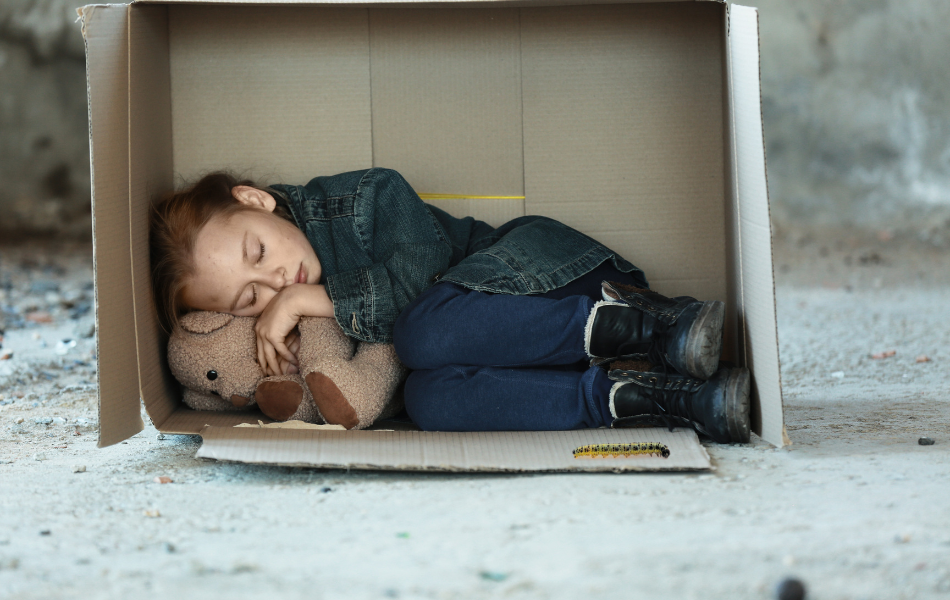Uncover the signs of childhood depression and learn how early detection and support can transform lives. Your guide to understanding and helping young minds.
Childhood depression is a serious and often misunderstood mental health issue that affects children as young as preschool age. Unlike the occasional sadness that all children experience, depression is a persistent condition that can impact a child’s emotional well-being, development, and overall quality of life. Raising awareness about childhood depression and recognising the signs early on is crucial for ensuring children receive the help they need to thrive. For more insights into understanding children’s emotions and the methodologies behind them, you can read my blog on Research Methodologies: Understanding Kids’ Emotions.
In this blog, we aim to shed light on the symptoms, causes, and treatment options for childhood depression. Our goal is to provide practical advice for parents, caregivers, and educators to help them support the mental health and well-being of the children in their care. By understanding childhood depression better, we can work together to create a supportive environment where every child has the opportunity to grow up healthy and happy.
- What is Childhood Depression?
- Recognising the Symptoms
- Causes and Risk Factors
- How to Help a Depressed Child
- Myths and Misconceptions
- Personal Stories and Testimonials
- Conclusion
- Resources and Further Reading
What is Childhood Depression?

Defining Childhood Depression
Childhood depression is a mental health disorder characterised by persistent feelings of sadness, hopelessness, and a lack of interest in once enjoyable activities. It affects the way a child thinks, feels, and behaves, leading to emotional and physical problems. Unlike temporary emotional responses to life’s challenges, depression is a long-lasting condition that requires professional attention.
Difference from Normal Sadness or Occasional Blues
It’s important to distinguish between normal sadness and clinical depression. All children experience sadness and mood swings, typical responses to life’s ups and downs. However, depression is more severe and enduring. While a child might feel down for a few days due to a specific event, a child with depression will experience these feelings intensely and for a prolonged period, often without any clear reason. This persistent sadness can interfere significantly with daily activities, school performance, and relationships.
Early Onset: Affecting Children as Young as 3 Years Old
Depression is not limited to teenagers and adults; it can affect children as young as 3 years old. Young children with depression may exhibit signs such as prolonged irritability, withdrawal from social interactions, and changes in sleep and eating patterns. Early recognition and intervention are essential to help these children develop coping mechanisms and prevent the condition from worsening as they grow older.
Recognising the Symptoms
Symptoms in Young Children (Preschool Age)

Recognising depression in young children can be challenging because they may not be able to express their feelings as clearly as older children or adults. However, there are specific signs that can indicate a child is struggling with depression:
Persistent Sadness or Irritability
- Young children with depression often show prolonged periods of sadness or irritability. They may seem unusually tearful, easily upset, or cranky without reason.
Lack of Interest in Play
- Play is a crucial part of a child’s development. A depressed child may lose interest in activities they previously enjoyed, showing little enthusiasm for toys, games, or playing with friends.
Changes in Appetite and Sleep Patterns
- Noticeable changes in eating or sleeping habits can be a red flag. This might include a loss of appetite or overeating, and difficulties with sleeping, such as insomnia or excessive sleeping.
Physical Complaints Like Stomachaches or Headaches
- Depression in young children often manifests through physical symptoms. Frequent complaints of stomachaches, headaches, or other unexplained aches and pains can be signs of underlying emotional distress.
Social Withdrawal
- A depressed child might withdraw from social interactions. They may avoid playing with other children, become unusually clingy with their parents, or prefer to be alone most of the time.
Recognising these symptoms early and seeking professional help can significantly impact a child’s development and well-being. If you notice these signs in your child it’s important to consult a pediatrician or a mental health professional for a thorough evaluation and appropriate intervention.
Symptoms in Older Children and Adolescents

As children grow older, the symptoms of depression may evolve and become more complex. While they may still exhibit some of the same signs as younger children, older children and adolescents often show additional symptoms that reflect their developmental stage and increased awareness of themselves and their environment.
Similar Symptoms as Young Children
- Older children and adolescents can still experience persistent sadness or irritability, changes in appetite and sleep patterns, physical complaints like stomachaches or headaches, and social withdrawal. These foundational symptoms remain important indicators of depression.
Feelings of Worthlessness or Guilt
- Adolescents with depression often struggle with intense feelings of worthlessness or guilt. They may fixate on past mistakes, believe they are a burden to others, or feel overwhelmingly inadequate.
Decline in Academic Performance
- Depression can significantly impact a child’s ability to concentrate, remember information, and stay motivated, leading to a noticeable decline in academic performance. They might have trouble completing assignments, participate less in class, and their grades may drop.
Substance Abuse
- In some cases, older children and teenagers may turn to substance abuse as a way to cope with their feelings of depression. This can include the use of alcohol, drugs, or other harmful substances as a means to escape their emotional pain.
Thoughts of Death or Suicide
- One of the most serious symptoms of depression in older children and adolescents is having thoughts of death or suicide. These thoughts may range from a preoccupation with death to active planning of suicide. Any mention of suicidal thoughts should be taken very seriously and addressed immediately with professional help.
Agitation or Restlessness
- Depression in older children can also manifest as increased agitation or restlessness. They might appear unable to sit still, frequently fidget, or exhibit a short temper. This can sometimes be misinterpreted as behavioural problems rather than a sign of underlying depression.
Recognising these symptoms in older children and adolescents is crucial for timely intervention. If you observe these signs in a child or teenager, it’s important to reach out to a healthcare provider or mental health professional. Early detection and treatment can help manage the symptoms and improve the overall quality of life for affected individuals.
Causes and Risk Factors

Understanding the causes and risk factors of childhood depression can help in identifying children who may be at higher risk and in taking preventive measures. Depression in children can result from a complex interplay of genetic, biological, environmental, and psychological factors.
Genetic Predisposition and Family History
- A family history of depression or other mental health disorders can increase a child’s risk of developing depression. Genetics can play a significant role, making some children more susceptible to depression due to inherited traits.
Biological Factors
- Brain Chemistry: Imbalances in neurotransmitters, which are chemicals in the brain that affect mood and behaviour, can contribute to depression.
- Hormonal Changes: Hormonal fluctuations, particularly during puberty, can also impact mood and increase the risk of depression in adolescents.
Environmental Factors
- Trauma: Exposure to traumatic events such as abuse, neglect, the death of a loved one, or witnessing violence can trigger depression in children.
- Chronic Stress: Ongoing stressful situations, such as family conflict, financial instability, or parental divorce, can contribute to the development of depression.
- Bullying: Being bullied or socially isolated at school or in other settings is a significant risk factor for depression in children and adolescents.
Psychological Factors
- Low Self-Esteem: Children with low self-esteem, who view themselves negatively, or who are excessively self-critical are at higher risk of developing depression.
- Negative Thinking Patterns: Persistent negative thought patterns, such as believing that nothing will ever improve or that they are worthless, can contribute to the onset and maintenance of depression.
Medical Conditions and Medications
- Certain chronic medical conditions, such as diabetes, asthma, or chronic pain, can increase the risk of depression. Additionally, some medications used to treat these conditions may have side effects that contribute to depressive symptoms.
Identifying these causes and risk factors can help parents take proactive steps to support children who might be at risk. If a child is exhibiting signs of depression and has one or more of these risk factors, seeking professional help from a healthcare provider or mental health professional is essential. Early intervention can lead to more effective treatment and better outcomes for the child’s mental health and overall well-being.
How to Help a Depressed Child

Helping a child who is struggling with depression involves early detection, seeking professional help, providing support at home, and collaborating with schools. Here are practical steps parents can take to assist a child experiencing depression.
Early Detection
Encourage Open Communication
- Create an environment where your child feels safe to express their feelings. Encourage them to talk about their emotions and listen without judgment. Ask open-ended questions to help them articulate what they are experiencing.
Observe Changes in Behavior and Mood
- Pay attention to significant changes in your child’s behaviour and mood. Look for signs such as persistent sadness, withdrawal from activities, changes in sleep or eating patterns, and physical complaints like stomachaches or headaches.
Seeking Professional Help
Consult a Pediatrician or Mental Health Professional
- If you suspect your child is depressed, seek a professional evaluation. A paediatrician or child psychologist can assess your child’s symptoms and recommend appropriate treatment.
Types of Therapy
- Cognitive Behavioral Therapy (CBT): CBT helps children understand and change negative thought patterns and behaviours. It’s highly effective in treating depression.
- Play Therapy: For younger children, play therapy allows them to express their feelings through play, which can be more natural for them than talking.
Medication
- In some cases, medication may be necessary to manage depression. A doctor can prescribe antidepressants, but medication should always be part of a comprehensive treatment plan that includes therapy.
Supporting Your Child at Home
This child’s book can be purchased on Amazon. Click the link.
Creating a Supportive and Safe Environment
- Ensure your child feels loved and supported at home. Provide a stable and safe environment where they can thrive. Limit excessive screen time, as it can contribute to feelings of isolation and depression, and encourage activities that promote real-world interaction and engagement.
Encouraging Healthy Habits
- Promote a healthy lifestyle by encouraging regular physical activity, a balanced diet, and good sleep hygiene. These habits can have a positive impact on mood and overall well-being.
Being Patient and Understanding
- Be patient with your child. Understand that their depression is not something they can simply “snap out of.” Show empathy and provide consistent support.
Educating Yourself About Depression
- Educate yourself about childhood depression to better understand what your child is going through and how you can help. There are many resources available online and through mental health organisations.
Collaborating with Schools

Informing Teachers and School Counselors
- Inform your child’s teachers and school counsellors about their depression. This helps school staff understand your child’s needs and provide appropriate support.
Implementing Individualized Education Plans (IEPs)
- If necessary, work with the school to implement an IEP. This plan can include accommodations and modifications to help your child succeed academically while managing their depression.
Ensuring a Supportive School Environment
- Advocate for a school environment that supports mental health. Encourage programs and policies that promote well-being and address bullying and stress.
By taking these steps, you can help your child navigate through depression and work towards recovery. Early intervention, professional treatment, and a supportive home and school environment are key components in managing childhood depression effectively.
Myths and Misconceptions

Myth: “Children can’t get depressed.”
One of the most pervasive myths about childhood depression is that children are too young to experience depression. This misconception stems from the belief that childhood is a carefree, happy time free from serious emotional issues. However, research and clinical evidence show that depression can indeed affect children, even as young as preschool age. Children experience complex emotions and can suffer from mental health disorders just like adults.
Recognising that depression can occur in children is the first step toward providing them with the help they need.
Myth: “They’ll just grow out of it.”
Another common myth is that children with depression will simply “grow out of it” without the need for intervention. This dangerous misconception can lead to a lack of necessary treatment and support. Depression is a serious mental health condition that can persist and worsen over time if left untreated. Early intervention is crucial for helping children develop coping mechanisms and for preventing depression from becoming more severe in adolescence and adulthood. Ignoring a child’s depression in hopes that they will outgrow it can result in long-term negative impacts on their mental health and overall development.
Myth: “Depression is just a phase or a way to get attention.”
Some people mistakenly believe that a child’s depression is just a phase or a ploy for attention. This view can trivialise the child’s experiences and discourage them from seeking help. Depression is not a behaviour that can be turned on or off at will; it is a medical condition that requires appropriate treatment. By dismissing a child’s symptoms as mere attention-seeking, adults may inadvertently contribute to the child’s feelings of isolation and hopelessness. It’s essential to take any signs of depression seriously and approach them with compassion and concern.
Myth: “Talking about depression will make it worse.”
Many people fear that discussing depression with a child will exacerbate their condition or put ideas into their heads. In reality, open and honest communication is vital for addressing depression. Talking about their feelings can provide children with relief, reduce their sense of isolation, and encourage them to seek help. Avoiding the topic can make children feel that their emotions are invalid or that they must hide their struggles. Encouraging open dialogue helps children feel supported and understood, paving the way for effective intervention and recovery. Listen to your child without judgment.
Debunking these myths is essential for creating a supportive environment where children can receive the help they need. Understanding that depression is a real and serious condition in children is the foundation for providing appropriate care and support. By dispelling these misconceptions, we can better address childhood depression and promote mental health and well-being for all children.
Personal Stories and Testimonials
Charles’s Story: A Lifetime of Unhealed Wounds

Charles was a bright and talented boy, but his childhood was marred by the constant physical and emotional abuse he endured at the hands of his father. His father, under the guise of discipline, would take out his anger on Charles, leaving him terrified and unable to communicate directly with him. Charles relied on his sister to act as a go-between, as his father was gentler with her. The trauma of these experiences left deep scars on Charles. When his father passed away when Charles was just 12, the damage had already been done.
Charles carried his hurt and anger into adulthood, struggling with depression and even attempting suicide. In an effort to escape his pain, he turned to alcohol and the presence of the good life, believing it could provide temporary relief. Outwardly, Charles maintained a lovable and perfectionist personality, and both his business colleagues and friends adored him, despite his inner turmoil. It wasn’t until his 60s that he began to heal, reflecting on how different his life might have been if his depression had been addressed earlier. His story underscores the critical need for early intervention and support for children suffering from depression.
Clare’s Story: The Power of Early Intervention

Clare’s struggle with depression began when she was just three years old. Despite being loved dearly by her family, the demands of her parents’ jobs meant she spent most of her time in daycare. At home, the focus was on basic chores and managing the disruptive behaviour of her siblings, leaving little time for Clare. She clung to her mother, crying incessantly whenever she wasn’t in her arms, and refused to interact with other family members.
Clare’s parents recognised her distress and sought help from a child psychologist. Through play therapy and a nurturing environment, Clare began to show signs of improvement. Her independence grew, and slowly, her symptoms of depression started to lift. Clare’s story highlights the importance of recognising the signs of depression early and seeking professional help. With the right support, even the youngest children can overcome their struggles and lead happier lives.
Mark’s Story: A Tragic End That Could Have Been Prevented

Mark was a frequent visitor to our house, always bringing gifts and seeking connection. Despite coming from a divorced family, his mother was very kind and caring. Our home was bustling with activity, filled with our own children, a foster child, and nephews. However, my husband did not particularly like Mark, so we didn’t invite him over as often as we might have. Mark struggled academically and seemed to be searching for a sense of belonging and acceptance.
As the years went by, Mark’s struggles intensified. At the age of 21, after a breakup with his girlfriend, feeling overwhelmed and isolated, he tragically took his own life by gassing himself in his mother’s car. This devastating outcome might have been avoided if we had recognised the signs of depression and understood the importance of early intervention. Neither his mother nor I were aware of the depths of his struggles or how to help him effectively at that critical stage.
Mark’s story is a poignant reminder of the importance of awareness and education about childhood and adolescent depression. Understanding the signs and knowing how to provide support can make a profound difference. If we had known more about depression, we might have been able to help Mark find the support and treatment he needed, potentially preventing this tragic loss. This underscores the vital need for early detection, open communication, and professional help in addressing depression in children and young adults.
The Importance of Seeking Help
These personal stories of Charles, Clare and Mark illustrate the profound impact depression can have on children and the importance of early intervention. Charles’s life could have been drastically different if his depression had been addressed when he was young. Clare’s journey shows how professional help and a supportive environment can lead to positive outcomes, even in very young children. One can learn from what happened to Mark. Learn about depression so you can identify when either your children or other children are being affected.
Seeking help from mental health professionals, such as child psychologists, and utilising therapies like play therapy can make a significant difference in a child’s life. These interventions provide children with the tools they need to understand and manage their emotions, paving the way for a healthier and brighter future. Recognising the signs of depression and taking prompt action can help prevent a lifetime of suffering and allow children to thrive
Conclusion

Childhood depression is a serious mental health issue that can have profound and long-lasting effects on a child’s well-being. Through this blog, we’ve explored the symptoms, causes, and ways to support children struggling with depression. Here are the key points to remember:
- Early Detection and Intervention: Depression can affect children of all ages, including preschoolers. Recognising the signs early and seeking professional help is crucial for effective intervention. Early detection can prevent the condition from worsening and improve the child’s chances of recovery.
- Support and Understanding: Creating a supportive environment at home and school is essential for children with depression. Encouraging open communication, providing love and understanding, and seeking help from mental health professionals are vital steps in supporting children through their journey with depression.
- Positive Outcomes: While childhood depression can be challenging, there is hope. With the right support, children can overcome their struggles and lead fulfilling lives.
We encourage readers to take action if they suspect their child is depressed. Reach out to a paediatrician, mental health professional, or school counsellor for assistance. Remember, you are not alone, and help is available.
Resources and Further Reading
If you or someone you know needs help, here are some resources you can turn to:
- National Suicide Prevention Lifeline: 1-800-273-TALK (8255) (24/7 hotline)
- Crisis Text Line: Text HOME to 741741 (24/7 crisis support)
- Child Mind Institute: childmind.org
- American Academy of Child and Adolescent Psychiatry: aacap.org
- National Institute of Mental Health: nimh.nih.gov
- Research Methodologies: Understanding Kids’ Emotions: Link to blog
- Emotional Development Milestones in Children: Link to blog
Books:
Remember, seeking help is a sign of strength, not weakness. Together, we can support children with depression and help them live happier and healthier lives.
Recent Posts
Discover how different parenting styles influence your child’s emotional growth and learn practical strategies to help them regulate emotions effectively. The way you parent today could shape...
Break the Cycle: Heal to Truly Support Your Children. Learn how childhood emotional neglect or abuse shapes parenting, and how to create lasting change. I’m writing this blog from personal...

